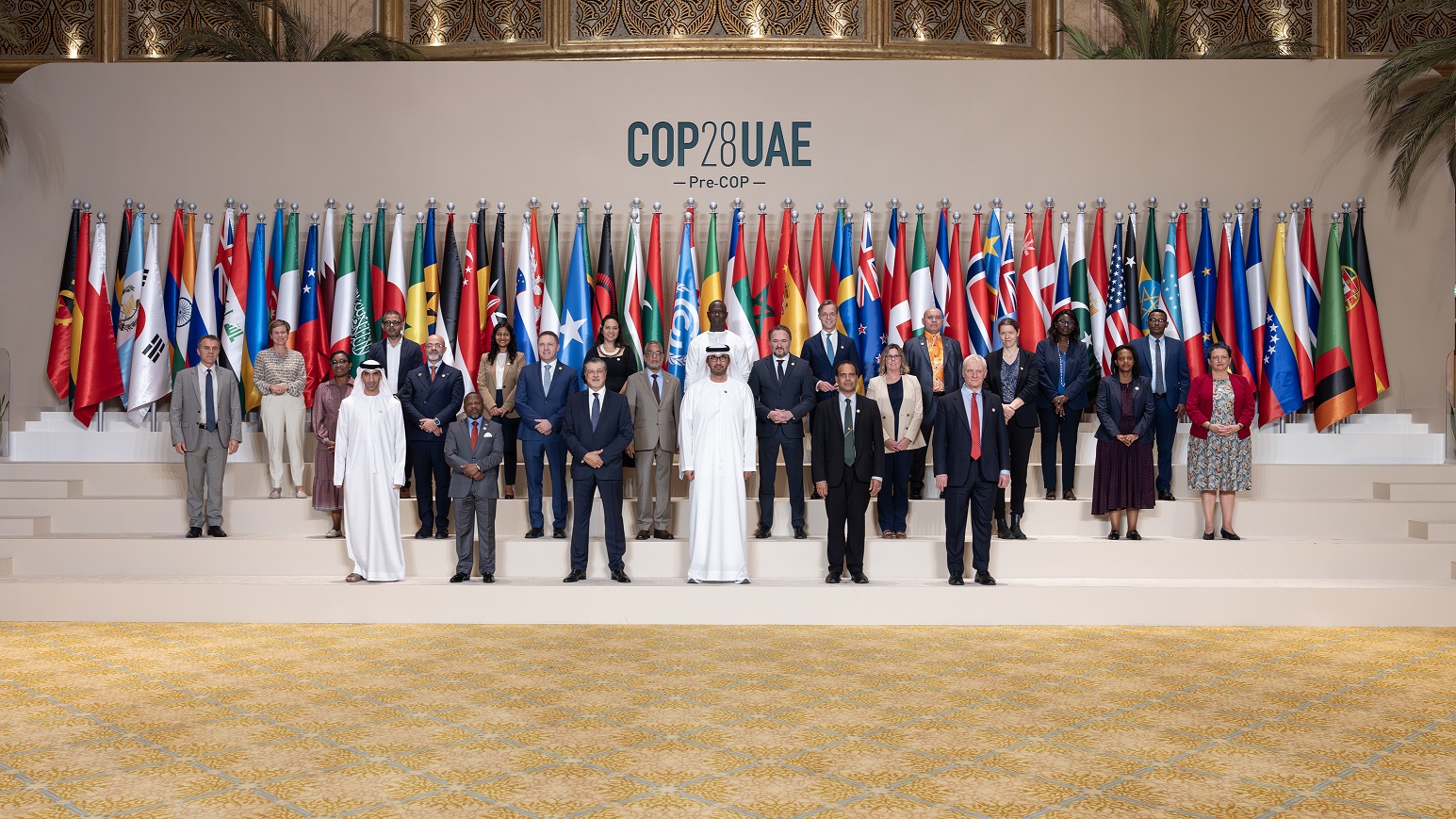- Integrate finance ministers into climate planning. Acknowledging the need for finance ministries to be bought in to programmatic approaches to adaptation finance, the C&DM could move to include both Climate and Finance Ministers. This could be done through coordination with the Coalition of Finance Ministers for Climate Action, The Vulnerable Twenty Group (V20) and similar ministerial groupings.
- Support to Central Banks to help integrate heightened climate related risk into their fiscal risk modelling. Include more joint working between the Climate and Development Ministerial and the Network of Central Banks and Supervisors for Greening the Financial System (NGFS).
- Explore role of insurance in covering residual risk that cannot be adapted to and building resilience by providing risk protection that can help minimise impacts on credit ratings from increased climate shocks. For example, a market study by the global insurance group Howden has shown that $300m in grant-based premium could unlock $25bn of coverage for the most vulnerable SIDS, covering losses above 10% of GDP. This could have a knock-on effect to credit ratings, bringing down the wider cost of capital in climate vulnerable countries through insurance.
- Consider expanding country platform approaches for adaptation. This should build on the range of existing work underway, including the Taskforce on Access to Climate Finance and the G7 Adaptation Accelerator Hub, as well as learning from the establishment and implementation of Just Energy Transition Partnerships (JETPs). This could help turn a National Adaptation Plan (NAP) into National (and sub-National) Adaptation Programmes linked to long-term economic development plans that embed climate risk and adaptation across institutions, and coordinate donors and investors behind priority investments to build long-term resilience.
- The C&DM should consider engaging with the CIFs to offer recommendations for the design of the in development Climate Resilience Programme to ensure it supports a programmatic “country platform” approach to adaptation for LDCs and SIDS in a way which promotes locally-led solutions and can scale wider sources of investment.
- Draft a guide to mobilising adaptation finance for SIDS/LDCs through programmatic planning approaches. This guide would review best practice on how programmatic approaches have mobilised finance. This guide should be aimed at both public and private sector finance. This should complement similar initiatives including the NDC Partnership (NDCP) and the GCF’s Climate Investment Planning and Mobilization Framework (CIPMF) launched at COP28.
- Consider innovative finance solutions to overcome barriers to investment in adaptation and resilience, for example, the Adaptation Benefits Mechanism (ABM) established by the African Development Bank. The ABM would create cash flow for adaptation projects through improved use of Article 6.8 for non-market approaches under the Paris Accord. These benefits would be created to be bought by the private sector and used to report on their climate action via the Enhanced Transparency Framework or their ESG commitments.
- Increase communications to improve awareness of reform within the Green Climate Fund (GCF), particularly from LDCs and SIDS. The new Executive Director of the GCF is leading an ambitious approach to reform, addressing longstanding concerns to streamline access and accelerate delivery. It will be important to amplify successes whilst continuing to encourage reform, in particular through LDCs and SIDS voices at the GCF board. Encouraging the funds to take an ambitious approach to complementarity and coherence will deliver wider reforms and greater impact.
- Tracking progress on climate finance access arrangements. Given the fragmented nature of the climate finance architecture, it is currently difficult to track whether access to finance is improving (including access for LDCs and SIDS specifically). An independent body not attached to any fund or MDB could track institutional reform and report on progress and changes in a non-partisan, digestible and regularly updated way.
- Knowledge management. There is considerable interest in a hub for knowledge sharing on adaptation finance which cuts through the huge volumes of information on the internet. This would be particularly helpful for LDCs and SIDS, whose points of contact are often overwhelmed by enquiries and workload. The work of the NDCP’s Climate Funds Explorer is welcome in this regard.
- Enhance investor engagement with programmatic approaches/national adaptation programmes to help refine their design. Governments often lack capacity and expertise to translate their NDCs/NAPs into investment plans, strategies, enabling environments and business models that will attract private sector investment. There is substantial private sector expertise ready to engage on a pro-bono basis. Investor scrutiny of plans at an early stage is likely to make their design more appealing to investors.
- Capacity building for domestic commercial banks to offer incentives for investment into adaptation. This should focus on the development of adaptation taxonomies underpinned by risk data and analysis, which is currently a huge barrier to investment.
- Encourage innovative investment in insurance against Loss and Damage. Research by insurance group Howden suggests that $5m in grant finance (per country) for six vulnerable countries to protect against the highest priority risks (‘stop loss’ cover) could unlock $1bn of cover from risk capital markets.
- Bolster human resources and technical capacity in LDCs and SIDS. There is a significant and widening gap in the availability of local human resources in SIDS and LDCs to plan and finance adaptation solutions.
- In the short term, explore whether a group similar to Tax Inspectors Without Borders could be established to provide pro-bono professional finance expertise to LDCs and SIDS.
- In the long term, support training of key SIDS and LDC professionals via a range of public and private sector partners, including through secondments and scholarships.
- SIDS Climate Finance Aggregator. Aggregation at the regional level has helped SIDS coordinate larger ticket size finance applications. Consider whether SIDS could aggregate their adaptation needs into a single programme application.
- Reverse engineering successful solutions to similar countries. Projects such as the Cook Islands weather monitoring funding (Adaptation Fund) supports an intervention which is likely to be effective in other SIDS with similar geography, reducing the project design burden (while noting the variability of adaptation needs in differing contexts). The new Center for Access to Climate Finance launched by the Taskforce on Access to Climate Finance and the NDC Partnership aims to share lessons learned and models for enhancing access to finance for LDCs and SIDS.
- Regional centres for climate data and risk analysis. Risk analysis is a key gap impeding adaptation investment decisions. Pooled resource would be invaluable. Establishing regional centres for climate data and risk could be one way of filling this gap, with the cost of establishing centres potentially counted as climate finance.
- Capacity building for risk analysis, advice and management in finance ministries or through an independent body. Governments also need to develop risk analysis capacity within their planning systems. This could include hiring a chief risk officer as part of a climate finance division.
- This possibility should be explored at the political level at the next C&DM ministerial.
- A short impact study could be prepared on hiring a chief risk officer or setting up an independent body to assess and advise on climate risk, such as the Committee on Climate Change in the UK.
- Donors should consider capacity building support to train risk officers in SIDS/LDCs, in line with local needs.
- Consider the role of the IMF RSF (Resilience and Sustainability Facility) arrangements to support adaptation action at scale in LDCs and SIDS.
- A co-champion is needed for CDM workstream three (scaling finance from all sources) alongside Vanuatu. C&DM members are encouraged to consider putting themselves forward for this workstream, for which Vanuatu is currently sole champion.
- Consider how to incentivise private investment flows to factor in adaptation and resilience, for example, through regulatory institutions and reporting requirements.
- Support local financial institutions in LDCs and SIDS to lend to SMEs and firms in a way that incentivises more climate resilient investment, e.g. the Africa Development Bank’s (AfDB) green banks facility.
- Explore tax and subsidy reform. Consider ways of raising more revenue through innovative tax, subsidy reform and levies on corporates and fossil fuel companies, following the polluter pays principle
Oliver Rhode
Wilton Park | July 2024
In partnership with





-
Notes
Wilton Park reports are brief summaries of the main points and conclusions of a
conference. The reports reflect rapporteurs’ personal interpretations of the proceedings.
As such they do not constitute any institutional policy of Wilton Park nor do they
necessarily represent the views of the rapporteur. Wilton Park reports and any
recommendations contained therein are for participants and are not a statement of policy
for Wilton Park, the Foreign, Commonwealth and Development Office (FCDO) or His
Majesty’s Government nor any participating governments.
Should you wish to read other Wilton Park reports, or participate in upcoming Wilton Park
events, you can find out more here.
To receive our monthly bulletin and latest updates, please subscribe here.
